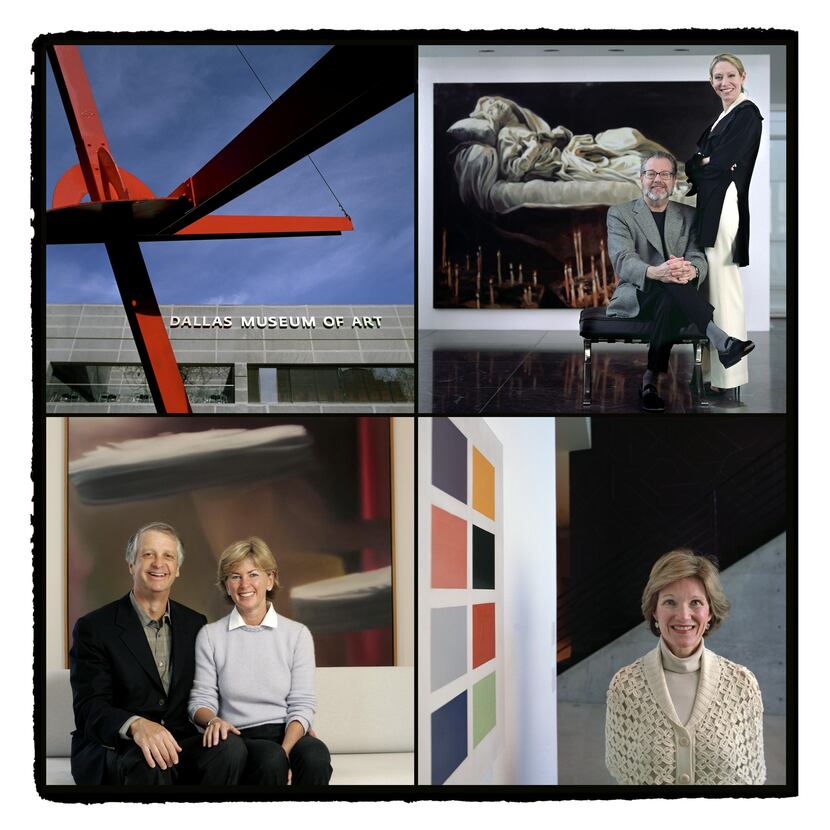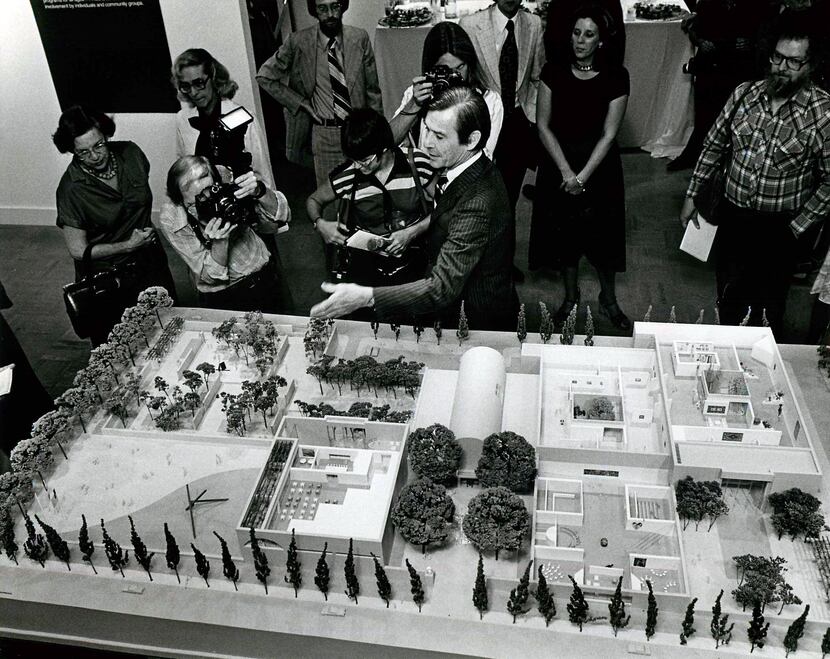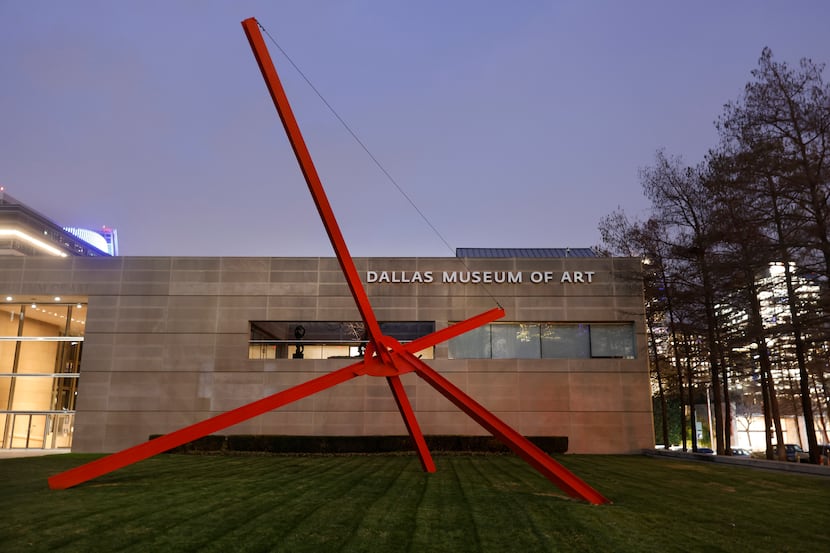Late last year and with little fanfare, the Dallas Museum of Art took concrete steps toward a major expansion, commissioning the architecture firm Perkins & Will to conduct a planning study for a future building project. That study will help the museum determine the scope, location and costs for such a building, and develop a process for hiring a design architect.
“We are now at the very early stages of planning what this will look like,” says the museum’s director, Agustín Arteaga. “The strategic plan will guide what we’ll do in the future.”
The museum has notified the city, which owns the museum building, of its intentions. “We will continue to have conversations with them about the public benefit of this expansion,” says Jennifer Scripps, the director of the Dallas Office of Cultural Affairs.
A need for more exhibition and storage space is driven by the projected arrival of the so-called Fast Forward bequest of 2005, in which the Dallas arts patrons Robert and Marguerite Hoffman, Cindy and Howard Rachofsky, and Deedie and Rusty Rose promised their collections to the museum. Exactly when those collections will arrive is undetermined, but when they do the gifts could entail more than 1,000 works, most of it contemporary art.

There are other imperatives for the museum, among them a desire to expand its outreach to the Dallas community.
“If they are going to expand, I see that as an opportunity to expand what they’re collecting, and to expand on the very limited number of artists of color they have in their collection,” says the influential Dallas artist and curator Vicki Meek.
This would be the museum’s first major expansion since 1993, when architect Edward Larrabee Barnes added a new wing to his original museum building, which opened in 1984.
The museum has three clear options for the location of an expansion project: It can build on top of itself (the Barnes extension was designed so it can support additional floors); it can erect a new wing on its lawn fronting Ross Avenue; or it could build or acquire a satellite elsewhere in the city — a return to Fair Park, the museum’s first permanent home, would be an intriguing possibility.

The museum finds itself at a difficult moment to be contemplating such a project, not least due to COVID-19, which has slashed annual attendance in half. For this year, the museum projects it will receive 455,000 visitors. Pre-pandemic, attendance had topped 900,000, according to Arteaga.
Beyond a loss of traffic and associated revenue, presumably but not necessarily a temporary condition, the museum must grapple with a series of existential questions about what it means to be an encyclopedic art museum as we move into the middle of the 21st century.
Who, exactly, is the museum for? The general public, in all its diversity, or its well-heeled patrons, who make its existence possible but also control its destiny and stand to reap enormous rewards, in prestige and tax benefits, for their gifts and support?
Balancing that equation has become an increasingly difficult endeavor, given the intensive scrutiny into the sources of extreme wealth. Artists and activists seem unwilling to tolerate patrons and funding sources they perceive as morally deficient. In 2019, for instance, an artist-led protest forced the military supply contractor Warren Kander to resign from the board of New York’s Whitney Museum.
There lies an exceedingly slippery slope. Who’s to say what money is or is not dirty? There is nary a museum in Texas that is not funded in some significant way, directly or indirectly, by the proceeds from fossil fuels, the DMA included.
“There’s an umbilical cord that attaches these museums to extreme wealth,” says Andrew McClellan, a professor of art history at Tufts University, who has written extensively on the history of the art museum. “American museums are really vexed in this regard because we have decided to reject federal funding.”

The stratospheric escalation of prices on the art market has only exacerbated that dependence. The rise of NFTs, an ungoverned new class of digital art, presents its own challenges of acquisition, storage, and display. Will the museum’s expansion need to include a server farm to accommodate them?
Probably not.
“My priority is to have a building that serves our community, a building that is functional, accessible, transparent and is thinking about the context of today,” says Arteaga, who is a trained architect.
That’s not particularly revealing, but some insight into his thinking may be drawn from his comments on the museum’s current home. “It was built with the sense that it would protect everything that was happening inside,” he says of the rather stolid, insular museum Barnes designed. That was an appropriate posture when it sat alone in the Arts District, though it seems somewhat out of step with the museum’s desire to embrace the community, both physically and metaphorically.
Barnes was a conservative choice for the original building, a restrained modernist with a genteel manner. Philip Johnson, a longtime nemesis, described him as “a sheep in sheep’s clothing.” He was rehired for the 1993 expansion by the museum’s director then, Rick Brettell, who wanted a seamless building that would not upstage the museum’s collection. It doesn’t, though it can be a challenge to find one’s way around.
“We struggle with navigation,” says Arteaga. For some, and I count myself among them, that difficulty has its own appeal; to wander the museum’s rooms is an opportunity for chance encounters and discovery.
If the museum truly values diversity, the hiring of a design architect would be a good place to prove it. Every cultural building in the Arts District was designed by a male architect, and most of them white (the exception being I.M. Pei).
Several firms with diverse leadership have built recent museum projects in Texas, among them David Adjaye (the Ruby City Contemporary Art Center, in San Antonio), Johnston Marklee (a drawing center for the Menil, in Houston), and WORKac (the Blaffer Art Museum, also in Houston). The New York based firm So-Il has also produced several well-received new art spaces: the Amant Art Campus in Brooklyn and the Shrem Museum of Contemporary Art at the University of California, Davis. All warrant consideration, as does Dallas-based architect Max Levy, a poet of light and shadow.
Selecting an architect is, or should be, an edifying and enjoyable project. Not so pleasant is raising the money to pay for what that architect might build. When the original Barnes building was constructed, the city pitched in $24.8 million in bond funding, supplementing $20 million in private donations. The city’s annual support for programs and maintenance is roughly $2 million. (It was higher last year, thanks to Federal COVID-19 relief funds.)
A comparable expansion project, the Kinder Building of the Houston Museum of Fine Arts, which opened in 2021 with a design by Steven Holl, cost roughly $150 million. That figure does not include the added and continuing costs of maintenance, staffing and other demands attendant with new construction.
The Houston museum could take on those burdens because its financial position is considerably stronger than the DMA’s, with an endowment of roughly $1.8 billion compared to the DMA’s $270 million.
The danger is that the museum board, driven by its patrons, saddles taxpayers with debt and increased financial obligations to support their own, tax-deductible gifts.
And those gifts are disturbingly indeterminate. In 2005, at the time it was promised, the Fast Forward bequest was described as “irrevocable.” But since that time, numerous works have been sold off, among them a 1961 canvas by Mark Rothko, sold by Marguerite Hoffman for $17.6 million, and a Jeff Koons sculpture sold by the Rachofskys for $28.7 million.
“The whole understanding of the museum, is that I can do anything to enhance the collection along the way,” Howard Rachofsky told the News last year.
Whatever the final form those gifts take, creating a new home for them, and for the museum’s other needs, will test its priorities. “Are you supporting the artists in the city, or are you building buildings?” asks Meek. “We’re a city that focuses on facilities, and not what’s happening in the facilities, and even less about the artists who make the things that go in the facilities.”
As it contemplates expansion, the DMA will need to satisfy all of its constituencies and obligations — and that’s a lot to ask from architecture.

